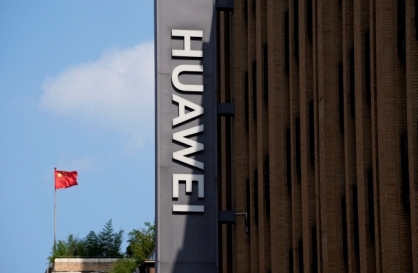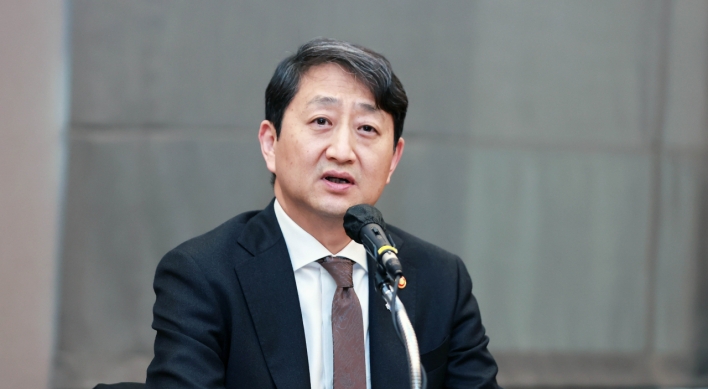The general perception about failure is that it is bad ― and rightly so. Failure incites negative feelings such as desperation, anxiety and a lack of self-confidence. People who do not cope well with failure tend to become risk averse, avoiding challenges and accepting only tasks that are easy to complete. Companies that operate in this manner can consistently achieve their goals in the short run, but will be overtaken by rivals in the long run because they fail to innovate. Innovative global companies not only accept mistakes, they make a concerted effort to learn from them. For example, at U.S. multinational 3M, the “McKnight Principles” encourage employees to take initiative and accept the possibility that mistakes will be made. At IDEO, a U.S.-based design firm, management gives employees a license to fail, providing impetus for creativity.
Learning from defeat
Innovative companies distinguish between failures that stimulate creativity and those that do not. The former involves diverse experiments based on meticulous planning, identification of the causes of failure and the application of lessons learned from the failure.
Amy C. Edmondson at Harvard Business School classifies failures according to the cause, saying that only praiseworthy failures affect creativity. Praiseworthy failure occurs when an individual with a high level of knowledge fails in an experiment due to complex causality. This kind of failure helps expand knowledge of the relevant field. How can companies promote intelligent failures?
In his book, “No Failures: Only Success Delayed,” Michael Lum, a trainer from Singapore, emphasizes the importance of having the courage to fail and of learning something new from failure. Lum places company and individual failures into four categories. The “born loser” does not have the ability to learn from mistakes, while the “professor” does. However, both avoid new challenges to protect themselves from risks and failures.
The “survivor” is also incapable of learning from mistakes but does not retreat from new challenges. Consequently, mistakes are repeated. Finally, the “conqueror” is someone who takes risks and faces new challenges while learning from mistakes to achieve creative and innovative results. To successfully fail, conquerors employ a number of strategies.
Reducing the fear of failure
Many employees avoid challenges because failure may lead to criticism, low job evaluations and blows to confidence and self-esteem. In some cases, management is reluctant to approve difficult projects even though employees are willing to take risks and face challenges.
Conqueror companies work hard to lower these fears, sharing past cases of positive failures that have led to greater success and even heaping praise on those who commit a “successful mistake.”
For example, 3M holds “Failure Parties” and BMW awards those who have made “outstanding mistakes” in order to encourage employees to free themselves from the negativity of failure. The CEO of Cheil Worldwide sends a “Fail Hard” letter to employees who did their best, but failed to win advertisement contracts.
Openly revealing failures
Conquerors encourage employees to openly reveal their failures. It is only natural that people want to hide their mistakes and flaws. However, in doing so, mistakes can be repeated, leading to even bigger mistakes. Also, if a failure is not acknowledged, more and more assets may be unwittingly committed to a moribund venture, turning the failure into a much bigger problem.
When mistakes are made, employee response may differ depending on the scale of the mistakes. Minor mistakes may be ignored, but this could delay a major success. For example, in the 1930s, U.S. chemical giant Du Pont accidentally discovered a very strong polymer that could be made into a fiber. It regarded this as a simple mistake. Nearly 10 years passed before the company realized the potential of its discovery and began to produce nylon.
On the other hand, big failures with huge investments are hard to acknowledge. Companies tend to pour more investments in them, a phenomenon called “escalation of commitment.” Motorola’s satellite phone Iridium is a prime example. The company invested ten years into the development of its satellite phone. However, by the time it was complete, mobile phones could be used almost anywhere.
Nevertheless, Motorola was unable to admit defeat, which caused the company to fall behind new trends in the mobile phone market. Eventually it was forced to merge with Google. Conquerors make efforts to create a stable atmosphere where failures and errors are not reprimanded. For this purpose, children’s hospitals and clinics in the U.S. state of Minnesota have failure. The CEO of Cheil Worldwide sends a “Fail Hard” letter to employees who did their best, but failed to win advertisement contracts.
Exposing shortcomings in the initial stages
Conquerors believe the more employees do experiments and experience failure, the higher their chances of success are. At IDEO, the No. 1 rule of brainstorming is “Maximize ideas.” Companies should create an atmosphere that shows respect to seemingly irrelevant ideas. Leo Burnett, an advertising group, applies a “no judgment” rule to brainstorming to encourage employees to freely speak out their ideas without fear of blame.
Certain companies recommend prototyping as it allows for more mistakes at a lower cost. British company Dyson developed a staggering 5,127 prototypes for its bag-less vacuum cleaner to achieve great success in the market.
The “Lean Startup” strategy, which is sweeping across Silicon Valley, is also based on similar fundamentals. The methodology suggests that companies, especially startups, start on a small scale and analyze market response and customer feedback. They can then improve their product or service immediately or design a new product or service with the exact specifications that consumers need. This strategy helps companies avoid major errors and failures by revealing flaws and weaknesses through minor failures.
Turning mistakes into assets
The fourth strategy involves collaboration and time. Conquerors do not regard failures as an individual problem. Instead, they try to find a solution at the organizational level. At Pixar Animation Studios, employees who are completely stumped can share their problem and solicit help at large review sessions. However, in order to truly capitalize on failures, one more element is needed; allowing time to analyze errors and failures.
Most organizations do not take this time before moving onto the next step, making the same mistakes inevitable. U.S. manufacturer W.L. Gore & Associates allocates 10 percent of its employees working hours to “dabble time” in which they are free to do whatever they wish. During this time, employees can take a breather and look into the unsuccessful elements of a failed project or start new ones. Through this, such innovative products as the company’s revolutionary coated guitar string, Elixir was born.
Implications
A majority of companies claim to understand the importance of failure but fall well short of providing the support that turns mistakes into innovations, and ultimately, into business success. Concrete support includes defining the concept of successful failure, establishing a consensus with employees and disseminating methodologies for failing successfully. To this end, IDEO trains its employees on 12 methodologies, including observation, sympathy, prototyping, abstract thinking and storytelling. It is also important to appreciate employees’ efforts and share their experience to give them a second chance.
Furthermore, it is vital to implement an evaluation system that promotes successful failure. For this purpose, 3M has a rule that requires obtaining at least 30 percent of revenue from products developed within the last four years to emphasize innovative results stemming from successful failure. Failures are part of the process to innovative results. If an individual stops in the middle of the process, the end result is a genuine failure, but if he or she continues the process of trial and error, the chances of success will greatly increase.
Learning from defeat
Innovative companies distinguish between failures that stimulate creativity and those that do not. The former involves diverse experiments based on meticulous planning, identification of the causes of failure and the application of lessons learned from the failure.
Amy C. Edmondson at Harvard Business School classifies failures according to the cause, saying that only praiseworthy failures affect creativity. Praiseworthy failure occurs when an individual with a high level of knowledge fails in an experiment due to complex causality. This kind of failure helps expand knowledge of the relevant field. How can companies promote intelligent failures?
In his book, “No Failures: Only Success Delayed,” Michael Lum, a trainer from Singapore, emphasizes the importance of having the courage to fail and of learning something new from failure. Lum places company and individual failures into four categories. The “born loser” does not have the ability to learn from mistakes, while the “professor” does. However, both avoid new challenges to protect themselves from risks and failures.
The “survivor” is also incapable of learning from mistakes but does not retreat from new challenges. Consequently, mistakes are repeated. Finally, the “conqueror” is someone who takes risks and faces new challenges while learning from mistakes to achieve creative and innovative results. To successfully fail, conquerors employ a number of strategies.
Reducing the fear of failure
Many employees avoid challenges because failure may lead to criticism, low job evaluations and blows to confidence and self-esteem. In some cases, management is reluctant to approve difficult projects even though employees are willing to take risks and face challenges.
Conqueror companies work hard to lower these fears, sharing past cases of positive failures that have led to greater success and even heaping praise on those who commit a “successful mistake.”
For example, 3M holds “Failure Parties” and BMW awards those who have made “outstanding mistakes” in order to encourage employees to free themselves from the negativity of failure. The CEO of Cheil Worldwide sends a “Fail Hard” letter to employees who did their best, but failed to win advertisement contracts.
Openly revealing failures
Conquerors encourage employees to openly reveal their failures. It is only natural that people want to hide their mistakes and flaws. However, in doing so, mistakes can be repeated, leading to even bigger mistakes. Also, if a failure is not acknowledged, more and more assets may be unwittingly committed to a moribund venture, turning the failure into a much bigger problem.
When mistakes are made, employee response may differ depending on the scale of the mistakes. Minor mistakes may be ignored, but this could delay a major success. For example, in the 1930s, U.S. chemical giant Du Pont accidentally discovered a very strong polymer that could be made into a fiber. It regarded this as a simple mistake. Nearly 10 years passed before the company realized the potential of its discovery and began to produce nylon.
On the other hand, big failures with huge investments are hard to acknowledge. Companies tend to pour more investments in them, a phenomenon called “escalation of commitment.” Motorola’s satellite phone Iridium is a prime example. The company invested ten years into the development of its satellite phone. However, by the time it was complete, mobile phones could be used almost anywhere.
Nevertheless, Motorola was unable to admit defeat, which caused the company to fall behind new trends in the mobile phone market. Eventually it was forced to merge with Google. Conquerors make efforts to create a stable atmosphere where failures and errors are not reprimanded. For this purpose, children’s hospitals and clinics in the U.S. state of Minnesota have failure. The CEO of Cheil Worldwide sends a “Fail Hard” letter to employees who did their best, but failed to win advertisement contracts.
Exposing shortcomings in the initial stages
Conquerors believe the more employees do experiments and experience failure, the higher their chances of success are. At IDEO, the No. 1 rule of brainstorming is “Maximize ideas.” Companies should create an atmosphere that shows respect to seemingly irrelevant ideas. Leo Burnett, an advertising group, applies a “no judgment” rule to brainstorming to encourage employees to freely speak out their ideas without fear of blame.
Certain companies recommend prototyping as it allows for more mistakes at a lower cost. British company Dyson developed a staggering 5,127 prototypes for its bag-less vacuum cleaner to achieve great success in the market.
The “Lean Startup” strategy, which is sweeping across Silicon Valley, is also based on similar fundamentals. The methodology suggests that companies, especially startups, start on a small scale and analyze market response and customer feedback. They can then improve their product or service immediately or design a new product or service with the exact specifications that consumers need. This strategy helps companies avoid major errors and failures by revealing flaws and weaknesses through minor failures.
Turning mistakes into assets
The fourth strategy involves collaboration and time. Conquerors do not regard failures as an individual problem. Instead, they try to find a solution at the organizational level. At Pixar Animation Studios, employees who are completely stumped can share their problem and solicit help at large review sessions. However, in order to truly capitalize on failures, one more element is needed; allowing time to analyze errors and failures.
Most organizations do not take this time before moving onto the next step, making the same mistakes inevitable. U.S. manufacturer W.L. Gore & Associates allocates 10 percent of its employees working hours to “dabble time” in which they are free to do whatever they wish. During this time, employees can take a breather and look into the unsuccessful elements of a failed project or start new ones. Through this, such innovative products as the company’s revolutionary coated guitar string, Elixir was born.
Implications
A majority of companies claim to understand the importance of failure but fall well short of providing the support that turns mistakes into innovations, and ultimately, into business success. Concrete support includes defining the concept of successful failure, establishing a consensus with employees and disseminating methodologies for failing successfully. To this end, IDEO trains its employees on 12 methodologies, including observation, sympathy, prototyping, abstract thinking and storytelling. It is also important to appreciate employees’ efforts and share their experience to give them a second chance.
Furthermore, it is vital to implement an evaluation system that promotes successful failure. For this purpose, 3M has a rule that requires obtaining at least 30 percent of revenue from products developed within the last four years to emphasize innovative results stemming from successful failure. Failures are part of the process to innovative results. If an individual stops in the middle of the process, the end result is a genuine failure, but if he or she continues the process of trial and error, the chances of success will greatly increase.

By Chin Hyun
The writer is research fellow at Samsung Economic Research Institute. This article was contributed by SERI. The opinions reflected in the article are her own. ― Ed.
-
Articles by Korea Herald






![[KH Explains] Can tech firms' AI alliances take on Nvidia?](http://res.heraldm.com/phpwas/restmb_idxmake.php?idx=644&simg=/content/image/2024/05/07/20240507050619_0.jpg&u=)


![[Grace Kao, Meera Choi] Has money displaced romance on dates?](http://res.heraldm.com/phpwas/restmb_idxmake.php?idx=644&simg=/content/image/2024/05/06/20240506050233_0.jpg&u=)








![[K-pop’s dilemma] Time, profit pressures work against originality](http://res.heraldm.com/phpwas/restmb_idxmake.php?idx=652&simg=/content/image/2024/05/08/20240508050705_0.jpg&u=20240508171126)
![[Today’s K-pop] NCT Dream to drop pre-release from 2nd Japan single](http://res.heraldm.com/phpwas/restmb_idxmake.php?idx=642&simg=/content/image/2024/05/08/20240508050725_0.jpg&u=)